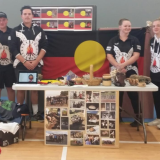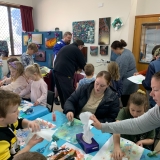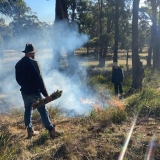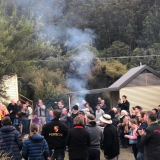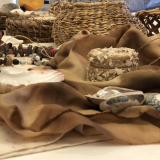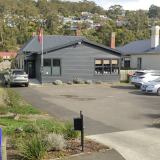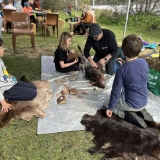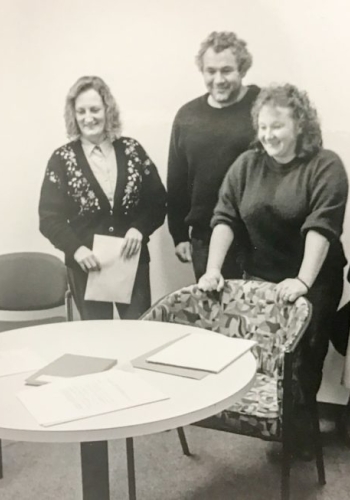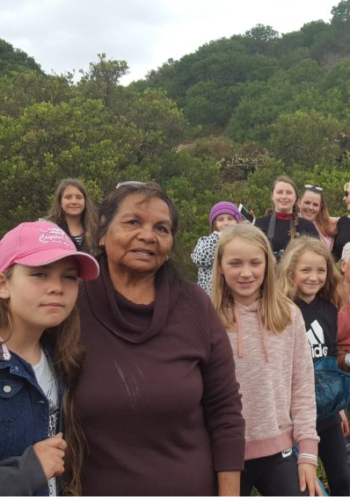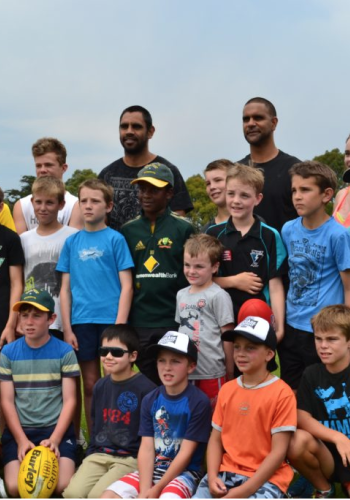Who We Are
What is an ACCO?
As per Clause 44 of the National Agreement on Closing the Gap an Aboriginal Community Controlled Organisation (ACCO) is:
Aboriginal and Torres Strait Islander community control is an act of self-determination. Under this Agreement, an Aboriginal and/or Torres Strait Islander Community-Controlled Organisation delivers services, including land and resource management that builds the strength and empowerment of Aboriginal and Torres Strait Islander communities and people and is:
- incorporated under relevant legislation and not-for-profit
- controlled and operated by Aboriginal and/or Torres Strait Islander people
- connected to the community, or communities, in which they deliver the services
- governed by a majority Aboriginal and/or Torres Strait Islander governing body.
Our Proud History
The South East Tasmanian Aboriginal Corporation (SETAC) became incorporated in 1992.
The organisation was established in response to community concerns and needs expressed through community developed projects.
Based in Cygnet, Tasmania, SETAC is a strong and vibrant part of the local community governed by an elected Board and incorporated under the Corporation Aboriginal and Torres Strait Inland Act 2006 (CATSI Act).
SETAC began from humble, even hesitant beginnings, around 1991. SETAC grew out of a need to “look after our old fellows”. SETAC assists and supports those who are elderly or disabled and of Aboriginal or Torres Strait Island descent.
Early meetings identified the need for the Aboriginal people in South East Tasmania to come together and develop stronger ties among themselves and the wider community.
“A desire to pass on knowledge and information is important for the Indigenous people of this region – it helps to maintain our cultural identity, for us to be the story tellers and keepers of our history.” Local Indigenous people wanted to connect with each other, talk and share that cultural identity, so that it would not be lost to the next generations.
There was also a strong desire for recognition. Out of these talks grew the need for an organisation to identify with, from which it would be possible to provide services for health, home care, social engagement and education. One of the early expressions of these discussions and needs was a book: “We Who Are Not Here: Aboriginal People Of The Huon And Channel Today” by Robyn Friend, published January 1st 1992 by the Huon Municipal Association.
The early beginnings led to meetings and consultation, the development of a constitution, and the development of funding applications. Early efforts of community members led to success with funding, and SETAC obtaining their first premises in Mary Street Cygnet in 1992.
“After several attempts, in 1995, ten hectares at Oyster Cove were among the 3800 hectares transferred to the Tasmanian Aboriginal people.” This was a joyous time for locals, including Enid Dillon and Furley Gardner, who were captured by a Mercury Newspaper photographer, waving the title, in a newspaper article in 1995.
The first SETAC premises were destroyed by fire in 1999, but due to work by staff members and volunteers, new premises at 19 Mary Street were acquired, renovated and moved into, with little inconvenience to SETAC clients.
The then Aboriginal Torres Strait Islander Commissioner, Rodney Dillon, rallied ATSIC to purchase an important part of our heritage, Fanny Cochrane Smith’s Church at Nicholls Rivulet.
SETAC applied for funds through National Heritage Trust and Coast care to begin rehabilitation works on Aboriginal sites in the SE region, the primary sites being: Cato’s, Burton’s, Coal Point, Cloudy Bay and Adventure Bay.
ATSIC funded programs in 2000 – Sport & Recreation: two youth camps held at Conningham and Charlottes Cove that included activities such as: bush skills, water sports, arts, crafts and story telling. Other sporting clinics were also delivered.
Environmental rehabilitation work continued and SETAC successfully stabilised midden blowout at Cloudy Bay, Bruny Island. The Truganinni monument plaque at Bruny Island Neck was reinstated. Funding was quarantined to stabilise midden at Cato’s Bay, Cygnet which continues as part of our cultural and environmental objectives.
SETAC then purchased its Primary Health Centre, 7393 Channel Highway, Cygnet.
Rodney Dillon, as ATSIC Commissioner, negotiated with the Indigenous Land Corporation to secure funding with SETAC, to support the purchase of Murrayfield, Bruny Island. The property was the first land purchase in South East Tasmania.
A highlight for SETAC in 2005 was achieving a national accreditation for the living history museum.
The years from 2010 to the present, especially indicates the high level of engagement and participation by SETAC. As well as the huge range of programs and services on offer, looking at minutes and meeting notes show the high degree of community participation. Recent AGM attendances show a high level of participation – there are often up to the same number of observers as there are SETAC members.
